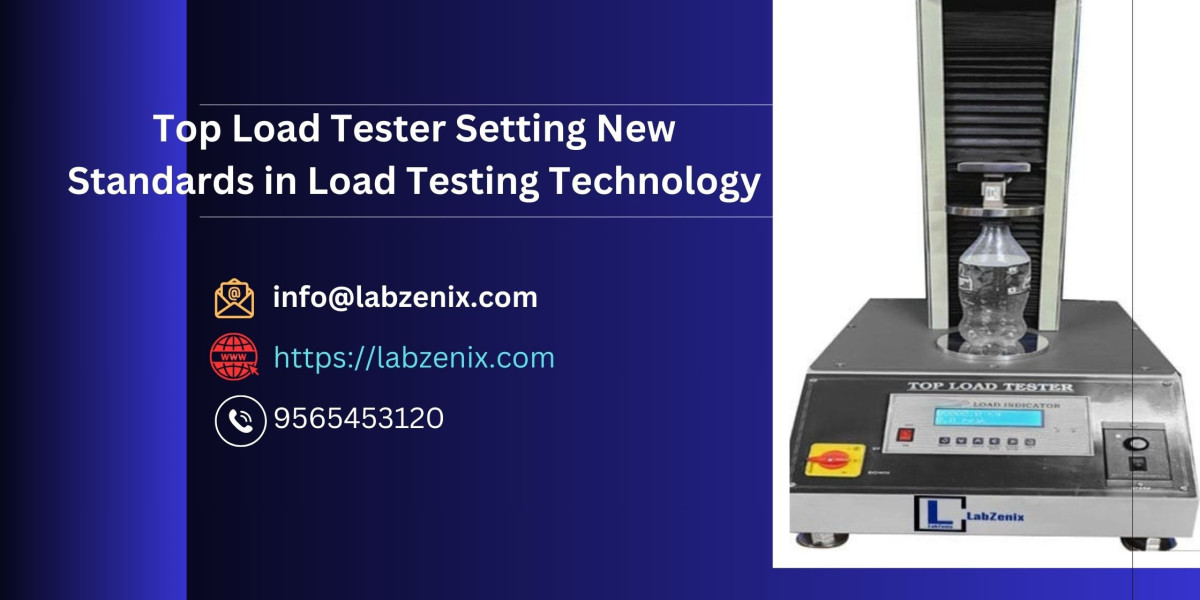This testing method simulates the real-world conditions packages face when stacked and ensures that they can withstand the weight without failing. For businesses relying on reliable, damage-free delivery, top load testing is an indispensable part of the packaging process.
What Is Top Load Testing?
Top load testing is a method used to assess the compressive strength of packaging by applying downward pressure to the top of a container, simulating the weight or pressure placed on it when stacked with other packages during transportation or storage. By evaluating the performance under load, manufacturers can determine whether their packaging will withstand the stresses and remain intact through the shipping process.
Why Top Load Testing is Crucial
1. Ensuring Protection Against Pressure Damage
One of the main challenges during transportation and storage is the stacking of packages. When several items are piled on top of each other, the bottom package experiences increased pressure that may cause it to crush, deform, or fail. Top load testing helps assess whether the packaging can endure this pressure, preventing costly product damage and ensuring product integrity.
2. Optimizing Packaging Designs
Testing how a package responds to compression forces offers valuable insights into packaging design. When a product fails under pressure, it points to weaknesses or design flaws that could be addressed, such as the need for sturdier materials, additional reinforcements, or design adjustments. By using top load tester results, companies can make better decisions to refine packaging for improved performance.
3. Reducing Financial Losses
Packaging failures often result in damaged products, which lead to returns, replacements, and repairs. These problems incur hidden costs, including extra shipping, product re-manufacturing, and loss of customer trust. Using top load testing helps reduce these risks by improving the strength and durability of packaging, which leads to fewer returns, lower waste, and higher customer satisfaction.
4. Meeting Regulatory Standards
Some industries, particularly those involving food, pharmaceuticals, and consumer electronics, have strict regulations related to packaging strength. By conducting top load tests, businesses ensure that their packaging meets the necessary industry standards, helping them stay compliant and avoid penalties related to unsafe packaging.
How Top Load Testing Works
Top load testing is typically a straightforward process, providing accurate insights into packaging behavior. Here’s how it works:
Prepare the Packaging Sample: A package is selected and filled with the product or a simulated equivalent, ensuring the test replicates real-world conditions.
Apply Force: A load tester gradually applies downward pressure on the top of the package. This is done in a controlled manner to mimic the stress that packaging might experience during transport, especially when stacked with other items.
Monitor Behavior: The tester tracks any changes in the package’s structure, observing whether it deforms, collapses, or maintains its integrity under pressure. The test continues until the packaging shows visible signs of failure or it reaches its predetermined limit of load-bearing capacity.
Analyze Results: The final pressure value at which the packaging fails is recorded. This data is vital for assessing whether the packaging meets the required standards or if design improvements are needed.
Different Types of Top Load Testers
When it comes to choosing a Top Load Tester Digital, businesses can select from a variety of testing machines to meet their needs. Here are the main types:
Manual Testers: These machines require human input to apply the load and assess the performance of the packaging. Manual testers are affordable and suitable for small-scale testing where precision is not the primary concern.
Automated Testers: Automated machines are ideal for larger operations, where consistency, speed, and accuracy are paramount. These testers apply pressure and record results automatically, enabling high-volume testing without manual intervention.
Comprehensive Testing Systems: Many companies opt for multi-functional testing systems that can perform a variety of tests beyond top load, including edge crush tests, burst strength tests, and more. This offers a complete solution for evaluating packaging performance from multiple angles.
Key Benefits of Top Load Testing
1. Increased Product Safety
Top load testing ensures that packaging is robust enough to withstand pressure, safeguarding the products during shipping. It helps eliminate the risk of shipping damaged goods, which can lead to returns and customer complaints.
2. Cost Savings Through Better Packaging
Top load testing reveals the minimum requirements for packaging strength. With this information, manufacturers can choose the most cost-effective materials that still provide reliable protection. By finding this balance, you reduce unnecessary spending on oversized packaging materials.
3. Improved Customer Satisfaction
Customers expect to receive products in good condition, and damaged goods due to inadequate packaging can harm your reputation. By using top load testing to create reliable packaging, businesses can improve their customer experience, leading to greater brand loyalty and repeat business.
4. Fewer Product Returns and Claims
Strong packaging helps prevent issues such as crushed boxes, broken goods, or faulty seals. By ensuring that packaging can handle the top load pressures before sending products out, businesses can greatly reduce returns, complaints, and insurance claims.
How to Select the Best Top Load Tester
There are several factors to consider when choosing a Top Load Tester:
Load Capacity: Ensure the tester can handle packages of your typical size and weight. Larger packages require testers with a higher load capacity.
Test Speed and Efficiency: Choose testers that suit the volume of testing you expect. Automated models can handle multiple tests quickly, which is ideal for high-volume industries.
Test Precision: The accuracy of measurements is essential. The top load tester should offer highly precise and repeatable results, so you can assess the exact pressure capacity of your packaging.
Functionality: Consider whether you need a multi-purpose testing machine that can perform multiple tests (burst tests, compression, etc.) beyond top load testing. These versatile machines may offer more value.
Conclusion
Top load testing is an essential step in ensuring that packaging can handle the stress of transit and storage without compromising product integrity. It’s a tool that allows businesses to optimize packaging designs, reduce costs, minimize damage, and improve overall shipping performance. Whether you're developing new packaging or refining existing designs, top load testing helps ensure that your products are protected every step of the way.
At Labzenix, we offer reliable Top Load Testers tailored to meet your testing needs. By incorporating top load testing into your quality assurance process, you can confidently ensure the safety of your products, increase operational efficiency, and maintain industry compliance.





